Translate this page:
Summary
Mexican Nut Pine (P. cembroides), native to the South-central U.S.A. seed, is a significant source of seeds for sale in Mexico. The excellently flavoured oily seed kernel is eaten raw, roasted, and ground into a powder for making bread, cakes, or nut butter. Mexican Nut Pine seeds are said to be the highest protein and lowest in starch of all the piñons. The seed contains about 14.6% protein, 62% fat and 17.3% carbohydrate. The subspecies Pinus cembroides subsp. orizabensis grows in semiarid conditions and has a good-sized oily seed kernel eaten raw, roasted, and ground into a powder for making bread, cakes, or made into nut butter. Bloom Color: Red, Yellow. Main Bloom Time: Early spring, Late spring, Mid spring. Form: Rounded. Pinus species,
Pine trees are evergreen trees native to the Northern Hemisphere and can also be found in some tropical and temperate regions of the Southern Hemisphere. They are known for their long lifespan, typically for 100-1,000 years, and are found in various environments, including semiarid deserts and rainforests. Pine nuts, the pine tree's seeds, are often used in cooking and baking, and the young male cones and inner bark of the tree can also be eaten. The inner bark, called the cambium, is high in vitamins A and C and can be eaten raw or dried and ground into a powder to be used as a flour or thickener in various dishes.
Physical Characteristics
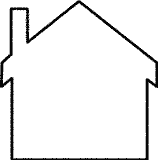
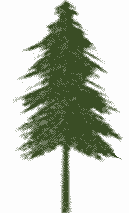 Pinus cembroides is an evergreen Tree growing to 8 m (26ft) by 5 m (16ft) at a slow rate.
Pinus cembroides is an evergreen Tree growing to 8 m (26ft) by 5 m (16ft) at a slow rate.
See above for USDA hardiness. It is hardy to UK zone 8. It is in leaf all year, in flower from May to June, and the seeds ripen in October. The species is monoecious (individual flowers are either male or female, but both sexes can be found on the same plant) and is pollinated by Wind. The plant is not self-fertile.
It is noted for attracting wildlife.
Suitable for: light (sandy) and medium (loamy) soils, prefers well-drained soil and can grow in nutritionally poor soil. Suitable pH: mildly acid and neutral soils. It cannot grow in the shade. It prefers dry or moist soil and can tolerate drought.
UK Hardiness Map
US Hardiness Map
Synonyms
Plant Habitats
Woodland Garden Canopy;
Edible Uses
Edible Parts: Inner bark Seed
Edible Uses: Condiment
Seed - the oily seed kernel is eaten raw, roasted, ground into a powder for making bread, cakes etc or made into a nut butter[1, 2, 11, 34, 62, 63, 92, 94, 183]. An excellent flavour[227]. A good size, the seeds are up to 15mm long[200]. Said to be the highest in protein and lowest in starch of all the piñons[183]. The seed contains about 14.6% protein, 62% fat. 17.3% carbohydrate[85]. This species provides a major source of seeds for sale in Mexico[229]. Inner bark - only used in times of dire need[85]. There are no more details but inner bark is often dried, ground into a powder and then used as a thickener in soups etc or added to cereals when making bread. A vanillin flavouring is obtained as a by-product of other resins that are released from the pulpwood[200].
References More on Edible Uses
Medicinal Uses
Plants For A Future can not take any responsibility for any adverse effects from the use of plants. Always seek advice from a professional before using a plant medicinally.
Poultice
The gum exuding from damaged areas of the tree is used to treat sore throats[92, 117]. The turpentine obtained from the resin of all pine trees is antiseptic, diuretic, rubefacient and vermifuge[4]. It is a valuable remedy used internally in the treatment of kidney and bladder complaints and is used both internally and as a rub and steam bath in the treatment of rheumatic affections[4]. It is also very beneficial to the respiratory system and so is useful in treating diseases of the mucous membranes and respiratory complaints such as coughs, colds, influenza and TB[4]. Externally it is a very beneficial treatment for a variety of skin complaints, wounds, sores, burns, boils etc and is used in the form of liniment plasters, poultices, herbal steam baths and inhalers[4].
References More on Medicinal Uses
The Bookshop: Edible Plant Books
Our Latest books on Perennial Plants For Food Forests and Permaculture Gardens in paperback or digital formats.
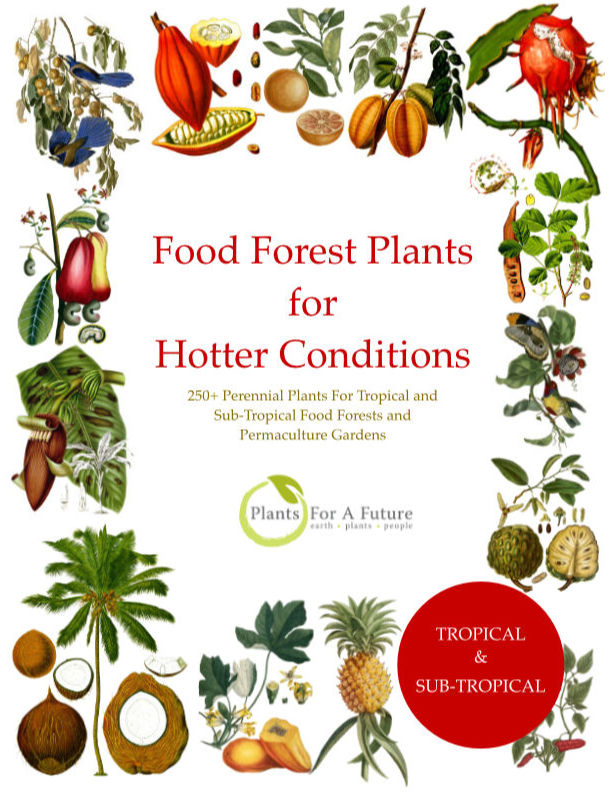
Edible Tropical Plants
Food Forest Plants for Hotter Conditions: 250+ Plants For Tropical Food Forests & Permaculture Gardens.
More
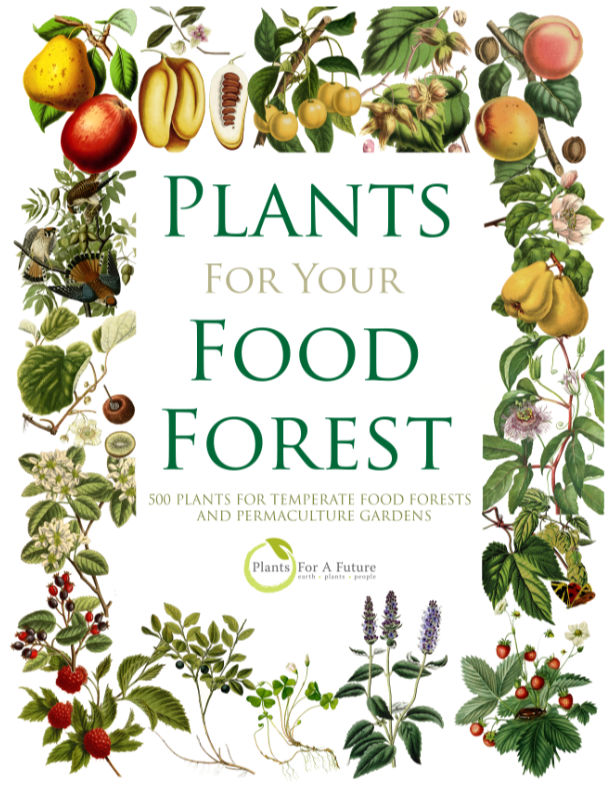
Edible Temperate Plants
Plants for Your Food Forest: 500 Plants for Temperate Food Forests & Permaculture Gardens.
More
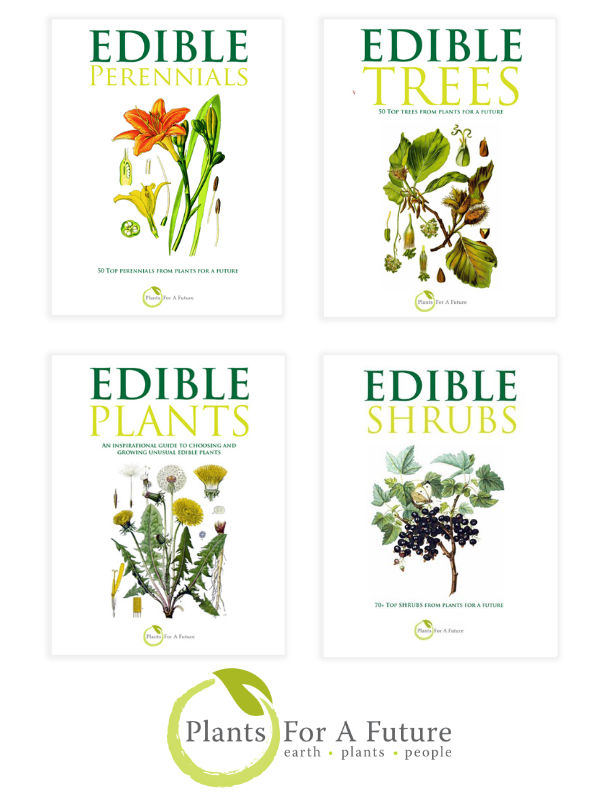
More Books
PFAF have eight books available in paperback and digital formats. Browse the shop for more information.
Shop Now
Other Uses
Adhesive Dye Herbicide Pitch Wood
Agroforestry uses:
Pines are valuable in agroforestry for timber production, erosion control, and as windbreaks. They can also improve soil quality and provide a habitat for wildlife. Some species produce edible pine nuts, contributing to biodiversity and food sources.
Landscape Uses: Pest tolerant, Screen, Specimen. A tan or green dye is obtained from the needles[168]. The needles contain a substance called terpene, this is released when rain washes over the needles and it harms the germination of some plants, including wheat[201]. A gum pitch is used as a glue for waterproofing and repairing pottery[117, 227]. Oleo-resins are present in the tissues of all species of pines, but these are often not present in sufficient quantity to make their extraction economically worthwhile[64]. The resins are obtained by tapping the trunk, or by destructive distillation of the wood[4, 64]. In general, trees from warmer areas of distribution give the higher yields[64]. Turpentine consists of an average of 20% of the oleo-resin[64] and is separated by distillation[4, 64]. Turpentine has a wide range of uses including as a solvent for waxes etc, for making varnish, medicinal etc[4]. Rosin is the substance left after turpentine is removed. This is used by violinists on their bows and also in making sealing wax, varnish etc[4]. Pitch can also be obtained from the resin and is used for waterproofing, as a wood preservative etc. Wood - soft, light, close-grained[82]. Somewhat fragrant when burnt[227]. Used for fuel and posts, but rarely for lumber[227]. 1. Nectary - Flowers rich in nectar and pollen:
No – Pines produce pollen but are wind-pollinated rather than insect-pollinated, so they do not attract nectar-seeking pollinators like bees or butterflies.
2. Wildlife - Food (Fruit, Seeds, Leaf litter, Shelter, Nesting, Roosting):
Yes – Pine seeds (pine nuts) are an important food source for birds, mammals, and other wildlife. The dense foliage and evergreen nature of many pine species offer shelter, nesting, and roosting sites for birds and small mammals. Leaf litter from pines contributes to the habitat for various organisms.
3. Invertebrate Shelter (Overwintering sites, Leaf litter, Groundcover):
Yes – The bark, leaf litter (pine needles), and fallen branches provide overwintering and shelter for many invertebrates. The structure of pine forests also offers cover for various species.
4. Pest Confuser (Smell):
Yes – The resinous, aromatic scent of pine trees may have some pest-repellent properties, though it is not typically classified as a pest confuser in the way some plants with strong aromatic oils are.
Special Uses
Carbon Farming Food Forest
References More on Other Uses
Cultivation details
Management: Standard Regional Crop Staple Crop: Protein-oil
Thrives in a light well-drained sandy or gravelly loam[1, 11]. Dislikes poorly drained moorland soils[1]. Established plants tolerate drought, succeeding in hot, dry positions[200]. This species is not hardy in the colder areas of the country, it tolerates temperatures down to between -5 and -10°c[200]. Leaf secretions inhibit the germination of seeds, thereby inhibiting the growth of other plants below the tree[18]. A slow growing plant[81, 120], it takes 25 years from seed before cones are formed[117]. The tree takes 250 - 350 years to reach full maturity[181]. The cones open and shed their seed whilst still attached to the tree[226]. Plants are strongly outbreeding, self-fertilized seed usually grows poorly[200]. They hybridize freely with other members of this genus[200]. This species is sometimes held to include a number of very similar species which are here treated as separate entities[81, 82]. See P. edulis, P. monophylla and P. quadrifolia. These species differ mainly in the number of leaves in a bundle[1]. The sub-species P. cembroides orizabensis. D. Baill. has larger seeds than the type[200]. Plants in this genus are notably susceptible to honey fungus[200]. Special Features:
Attracts birds, North American native, Inconspicuous flowers or blooms. Pine seeds are typically harvested in late summer to early autumn, usually from August to October (Northern Hemisphere), when cones begin to open and release seeds.
Pine trees usually flower in spring, typically from March to June (Northern Hemisphere), depending on the species and climatic conditions. Growth rates vary significantly among pine species, but many can be considered fast-growing, reaching heights of 10 to 30 feet (3 to 9 meters) within 5 to 10 years, depending on species and environmental conditions. Pine species are generally not self-fertile; they require cross-pollination between different trees to produce seeds effectively.
Carbon Farming
-
Management: Standard
Plants grow to their standard height. Harvest fruit, seeds, or other products. Non-Destructive management systems.
-
Regional Crop
These crops have been domesticated and cultivated regionally but have not been adopted elsewhere and are typically not traded globally, Examples in this broad category include perennial cottons and many nuts and staple fruits.
-
Staple Crop: Protein-oil
(16+ percent protein, 16+ percent oil). Annuals include soybeans, peanuts, sunflower seeds. Perennials include seeds, beans, nuts, and fruits such as almond, Brazil nut, pistachio, walnut, hazel, and safou.
References Carbon Farming Information and Carbon Sequestration Information
Temperature Converter
Type a value in the Celsius field to convert the value to Fahrenheit:
Fahrenheit:
The PFAF Bookshop
Plants For A Future have a number of books available in paperback and digital form. Book titles include Edible Plants, Edible Perennials, Edible Trees,Edible Shrubs, Woodland Gardening, and Temperate Food Forest Plants. Our new book is Food Forest Plants For Hotter Conditions (Tropical and Sub-Tropical).
Shop Now
Plant Propagation
It is best to sow the seed in individual pots in a cold frame as soon as it is ripe if this is possible otherwise in late winter. A short stratification of 6 weeks at 4°c can improve the germination of stored seed[80]. Plant seedlings out into their permanent positions as soon as possible and protect them for their first winter or two[11]. Plants have a very sparse root system and the sooner they are planted into their permanent positions the better they will grow[K]. Trees should be planted into their permanent positions when they are quite small, between 30 and 90cm[200]. We actually plant them out when they are about 5 - 10cm tall. So long as they are given a very good weed-excluding mulch they establish very well[K]. Larger trees will check badly and hardly put on any growth for several years. This also badly affects root development and wind resistance[200]. Cuttings. This method only works when taken from very young trees less than 10 years old. Use single leaf fascicles with the base of the short shoot. Disbudding the shoots some weeks before taking the cuttings can help. Cuttings are normally slow to grow away[81].
Other Names
If available other names are mentioned here
Native Range
NORTHERN AMERICA: United States, Texas, Mexico, Chihuahua, Coahuila de Zaragoza (south), Durango, Nuevo León, San Luis Potosí, Sonora (northeast), Tamaulipas (southwest), Zacatecas, Baja California Sur (south), Aguascalientes, Guanajuato, Hidalgo, Jalisco (northeast), México, Puebla, Querétaro, Tlaxcala (east), Veracruz de Ignacio de la Llave (w.-c.), Ciudad de México,
Weed Potential
Right plant wrong place. We are currently updating this section.
Please note that a plant may be invasive in one area but may not in your area so it's worth checking.
Conservation Status
IUCN Red List of Threatened Plants Status :

| Related Plants
|
| Latin Name | Common Name | Habit | Height | Hardiness | Growth | Soil | Shade | Moisture | Edible | Medicinal | Other |
| Acinos alpinus | Alpine Calamint | Perennial | 0.5 |
4-8
| | LMH | N | DM | 1 | 1 | |
| Carpinus betulus | Hornbeam, European hornbeam, Common Hornbeam, European Hornbeam | Tree | 25.0 |
5-7
| M | LMH | FSN | M | 0 | 2 | 3 |
| Carpinus caroliniana | American Hornbeam, Blue Beech, Ironwood, American Hornbeam | Tree | 12.0 |
3-9
| S | LMH | SN | M | 1 | 1 | 2 |
| Carpinus cordata | | Tree | 15.0 |
4-8
| S | LMH | SN | M | 0 | 0 | 2 |
| Carpinus laxiflora | | Tree | 15.0 |
4-8
| | LMH | SN | M | 0 | 0 | 2 |
| Lupinus albus | White Lupin | Annual | 1.2 |
6-9
| M | LM | N | M | 4 | 1 | 4 |
| Lupinus albus graecus | | Annual | 1.0 |
6-9
| | LMH | N | DM | 4 | 0 | 3 |
| Lupinus angustifolius | Blue Lupin, Narrowleaf lupine | Annual | 1.0 |
7-9
| | LM | N | M | 4 | 0 | 4 |
| Lupinus arboreus | Tree Lupin, Yellow bush lupine | Shrub | 1.5 |
7-10
| F | LM | N | DM | 0 | 0 | 5 |
| Lupinus hirsutus | | Annual | 0.0 |
0-0
| | LMH | N | M | 2 | 0 | 3 |
| Lupinus littoralis | Seashore Lupine | Perennial | 0.5 |
6-9
| | LMH | N | M | 2 | 0 | 3 |
| Lupinus luteus | Yellow Lupin, European yellow lupine | Annual | 0.6 |
5-9
| F | LM | N | M | 3 | 0 | 3 |
| Lupinus mutabilis | Pearl Lupin, Tarwi | Annual | 1.5 |
8-11
| | LMH | N | M | 5 | 0 | 4 |
| Lupinus nootkatensis | Blue Lupine, Nootka lupine | Perennial | 0.7 |
4-8
| | LMH | N | M | 3 | 0 | 3 |
| Lupinus perennis | Sundial Lupine | Perennial | 0.6 |
4-8
| | LM | N | DM | 3 | 1 | 3 |
| Lupinus polyphyllus | Big-Leaf Lupin, Lupine | Perennial | 1.5 |
5-9
| M | LMH | N | M | 1 | 1 | 4 |
| Lupinus tauris | | Shrub | 0.0 |
0-0
| | LM | N | DM | 0 | 0 | 3 |
| Lupinus termis | White Lupin | Annual | 1.0 |
0-0
| | LMH | N | M | 2 | 0 | 3 |
| Phyllocladus alpinus | Alpine Celery Pine | Shrub | 9.0 |
7-10
| S | LMH | SN | M | 0 | 0 | 1 |
| Pinus albicaulis | White-Bark Pine | Tree | 20.0 |
4-8
| S | LM | N | DM | 4 | 2 | 3 |
| Pinus aristata | Bristle-Cone Pine | Tree | 12.0 |
3-10
| S | LM | N | DM | 2 | 2 | 2 |
| Pinus armandii | Chinese White Pine, Armand pine | Tree | 15.0 |
6-9
| M | LM | N | DM | 4 | 2 | 2 |
| Pinus ayacahuite | Mexican White Pine | Tree | 55.0 |
6-9
| | LM | N | DM | 2 | 2 | 3 |
| Pinus banksiana | Jack Pine | Tree | 12.0 |
2-7
| F | LM | N | DM | 2 | 2 | 3 |
| Pinus brutia | Calabrian pine, Turkish pine | Tree | 30.0 |
7-11
| F | LMH | N | DM | 2 | 3 | 3 |
| Pinus bungeana | Lace-Bark Pine, Bunge's pine | Tree | 10.0 |
4-7
| S | LM | N | DM | 3 | 2 | 3 |
| Pinus californiarum | | Tree | 10.0 |
8-11
| | LM | N | DM | 1 | 2 | 3 |
| Pinus caribaea | Caribbean Pine. Caribbean pitch pine | Tree | 30.0 |
10-12
| F | LM | N | DM | 2 | 2 | 3 |
| Pinus cembra | Swiss Stone Pine, Swiss Pine, Arolla Pine | Tree | 15.0 |
3-9
| S | LMH | SN | DM | 4 | 2 | 3 |
| Pinus cembra sibirica | Siberian Pine | Tree | 30.0 |
1-6
| S | LM | N | DM | 4 | 2 | 3 |
|
|
Growth: S = slow M = medium F = fast. Soil: L = light (sandy) M = medium H = heavy (clay). pH: A = acid N = neutral B = basic (alkaline). Shade: F = full shade S = semi-shade N = no shade. Moisture: D = dry M = Moist We = wet Wa = water.
Now available:
Food Forest Plants for Mediterranean Conditions
350+ Perennial Plants For Mediterranean and Drier Food Forests and Permaculture Gardens.
[Paperback and eBook]
This is the third in Plants For A Future's series of plant guides for food forests tailored to
specific climate zones. Following volumes on temperate and tropical ecosystems, this book focuses
on species suited to Mediterranean conditions—regions with hot, dry summers and cool, wet winters,
often facing the added challenge of climate change.
Read More
Expert comment
Author
Zucc.
Botanical References
1182200
Links / References
For a list of references used on this page please go here
Readers comment
| Add a comment |
|
If you have important information about this plant that may help other users please add a comment or link below. Only comments or links that are felt to be directly relevant to a plant will be included. If you think a comment/link or information contained on this page is inaccurate or misleading we would welcome your feedback at [email protected]. If you have questions about a plant please use the Forum on this website as we do not have the resources to answer questions ourselves.
* Please note: the comments by website users are not necessarily those held by PFAF and may give misleading or inaccurate information.
To leave a comment please Register or login here All comments need to be approved so will not appear immediately.
|
Subject : Pinus cembroides
|
|
|
|